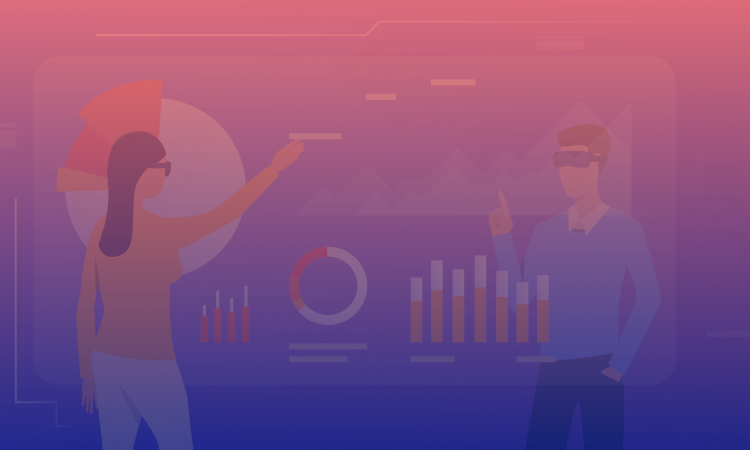Introduction
Businesses are increasingly focusing on making every customer interaction, whether it’s a tailored email, a chatbot response, or a call center reply, feel more personal and instant. This is made possible through Customer Data Platforms (CDPs), which have evolved from marketing tools into enterprise-wide hubs for unified customer data. Simply put, CDPs consolidate and manage customer data, making it much easier for businesses to personalize and improve customer experiences.
It was estimated that over 463 exabytes of data would be generated daily worldwide by 2025, which indicates the need for CDPs to manage customer data. It also explains why the CDP market has been witnessing significant growth, which is further fueled by AI, the demand for real-time engagement, and stricter privacy laws.
According to Anish Krishnan, Senior Analyst at QKS Group, “Over the past few years, the Customer Data Platform market has evolved from a standalone data unification tool to the backbone of enterprise-wide customer intelligence strategies. In 2025, we’re seeing CDPs move beyond basic profile building toward AI-driven personalization, real-time decisioning, and tighter integration with the broader marketing, sales, and service stack. The vendors that will lead the next wave are those enabling not just data centralization, but actionable intelligence at scale, fueling hyper-personalized experiences and measurable business impact.”
Let’s dive into five trends driving Customer Data Platform trends in 2025, which have been redefining how brands connect with customers and thrive in a data-driven era.
1. Real-Time Data Activation Takes Center Stage
Waiting hours to process customer data is history. In 2025, real-time customer data activation is a must, enabling brands to respond to customer actions in milliseconds. Picture a shopper browsing your website; CDPs like Adobe’s Real-Time CDP unify data from clicks, purchases, and profiles to trigger tailored offers instantly, boosting conversions. Another example is Treasure Data’s platform, helping brands like Yum! Brands deliver timely promotions and improve customer retention by up to 35%.
Unlike Data Management Platforms (DMPs), which handle anonymous ad data, or Customer Relationship Management (CRM), focused on sales pipelines, CDPs specialize in real-time omnichannel personalization. Without this speed, brands risk losing customers to faster competitors, making low-latency architectures a non-negotiable for CDP market growth.
2. AI-Powered Insights Drive Smarter Decisions
Artificial intelligence is transforming CDPs into intelligent engines that predict and prescribe actions. In 2025, platforms like Tealium’s use machine learning to forecast behaviors, such as spotting churn risks or suggesting next-best offers. Zeta Global’s CDP automates recommendations, crafting campaigns that feel intuitive and increase conversions.
Numerous businesses are now investing in AI for hyper-personalized experiences, a leap from static DMPs or CRMs that lack such depth. This CDP AI integration helps teams anticipate customer needs, and not just react, giving brands a competitive edge in delivering experiences that are actually appreciated. Predictive analytics in CDPs can anticipate customer needs even before they’re expressed.
3. CDPs Expand Beyond Marketing to Unify Enterprises
CDPs are breaking free from marketing silos to become enterprise-wide solutions, creating a unified customer profile for all departments. In 2025, sales, service, and operations teams leverage CDPs for consistent omnichannel personalization. Salesforce Data Cloud integrates with CRM to provide contact centers with real-time insights, ensuring seamless support, while HCL Software’s platforms enable data sharing across teams, streamlining operations. Several enterprises now use CDPs beyond marketing, driving cross-functional efficiency. Since CDPs deliver a single customer view that powers every touchpoint, they help businesses foster alignment and elevate customer satisfaction across the board.
4. Privacy and Compliance Move to the Forefront
With privacy regulations tightening, like GDPR, CCPA, and new 2025 laws in states like Delaware and Iowa, data privacy and CDP compliance are critical. Consumers now expect companies to be transparent about how customer data is being used, and expect them to ask for consent before collecting their data. Adobe’s CDP embeds privacy tools for transparent data handling, while Alation’s governance frameworks ensure compliance with evolving laws. TrustArc reports that 64% of consumers demand transparency in data usage. Privacy-first CDPs balance omnichannel personalization with ethical data practices, ensuring brands maintain customer trust without crossing legal or ethical lines.
5. Convergence with Broader MarTech Ecosystems
In 2025, the lines between CDPs, CRMs, and digital experience platforms (DXPs) are blurring as businesses demand flexible, composable MarTech stacks. Sitecore’s DXP integrates CDPs for seamless segmentation and personalization, while Salesforce connects CDPs to journey orchestration tools for end-to-end customer journeys. Mergers and acquisitions are reshaping the market, and several CDP vendors are expected to consolidate into larger ecosystems. Unlike rigid DMPs or standalone CRMs, this convergence enables agile, future of CDPs architectures. Destination CRM highlights embedded CDPs in engagement platforms for streamlined data flow, empowering brands to mix and match tools for maximum impact.
Conclusion: The Future State of CDPs
In 2025, CDPs are at a pivotal moment, driven by real-time customer data, CDP AI integration, enterprise adoption, data privacy and CDP compliance, and MarTech convergence. These trends fuel CDP market growth, making CDPs essential for delivering unified customer profiles and omnichannel personalization. To stay ahead, evaluate your CDP’s AI and privacy capabilities, integrate with existing systems, and prioritize real-time engagement.

